From Prilep to Ohrid, passing Bitola – Macedonia
Monasteries around Prilep
A day before going to Bitola, I drove through tiny villages until I reached Zrze monastery. Then, I found a troublesome shortcut to the mountain town of Kruševo. I returned to Prilep and drove steeply up to the Varosh monastery, and then to Treskavek.
In the morning, I left Prilep and went to the Zrze monastery. On my way, I passed through scenic villages, with traditional houses made of earth bricks, summer kitchen in the courtyard, and people working the field. When I reached Zrze village, I noticed that it had many stone houses, most of them pretty shabby or abandoned. The main road was in good condition, though and climbed steeply to the historic monastery of Zrze.
The Zrze monastery dated back to the 14th century and was perched on top of a vertical cliff. Below, cave-chapels dug into the rock were accessible with high wooden stairs. A cat greeted me with lots of meows, while in the courtyard of the monastery I couldn’t see any monk. The buildings of the monastery had whitewashed facades with apparent stone, here and there even with wooden beams. Outside the monastery, vegetable gardens extended on neatly groomed terraces. The church was impeccably preserved and had huge colorful frescoes on the western wall of the portico. I sat on the terrace facing the valley, in the shade of an enormous tree near the church, while lazy cats lounged around me.
From Zrze I headed straight ahead to the mountains. I passed through dusty villages with tall minarets and continued my way on troublesome, steep roads. When two cars had to pass next to another, one had to carefully stop on the right side of the road until the other one passed. I followed many countryside roads flanked by cultivated plots of land until I reached Kruševo – the highest town in Macedonia (1350m altitude). Kruševo had a picturesque center, with a tiny bazaar where old houses alternated with modern buildings. However, on the outskirts of the town massive and ugly villas had been recently built. At Sape Restaurant, I tested lamb tripe with intestines, garlic, and black pepper sauce (kukuruzi) and a very sweet local cake (ravanija).
From Kruševo, I went down the valley on the main (and good) road toward Prilep. At the outskirts of the town, I sought for the Varosh Monastery and tangled on impossible roads. I reached a dead-end with my car, on a steep unpaved street, just in front of a closed gate. I had to open the gate and drive in a private courtyard in order to turn the car and leave. Eventually, I found the Varosh monastery – tiny, picturesque, and tucked away under a cliff. However, a rigid nun guarded me carefully not to take any photo in her monastery.
I made the last ascent of the day up in Mount Zlato, at the Treskavec monastery. The monastery burnt a few years back and was under reconstruction. The road winded up in tight bends to the top of the mountain, where round rocks created a bizarre lunar scenery. A dog fiercely barked when I entered the former monastery, but a jeep parked in front of the monastery’s gate made me hope that someone still lived there.
In the evening, I sat on the terrace of the Antique House, and the owner unsuccessfully tried to speak in Macedonian with me. Meanwhile, the neighbors happily chatted in front of their gates while watching their kids. The children played with a noisy car-toy up and down the quiet and peaceful street.
From Prilep to Bitola
I randomly wandered throughout the bazaar and the fruit and vegetable market of Prilep, and then I headed to Bitola. There, I first went to the archaeological site of Heraklea Lyncestis. In the afternoon I walked through the city center of Bitola.
In the morning, I crossed the bridge over the Prilepska Reka river and quickly reached the lively streets of the Turkish bazaar from Prilep (Čaršija). One could find anything in the bazaar. Socks, underwear, and T-shirts as well as slippers and plastic balls in massive numbers. In a street corner, a small shop sold exclusively eggs. An old lady dressed in black sold vegetables in the street and held an umbrella against the sun. In the main square, a painter carefully displayed his paintings for sale next to the clock-tower, while I was sipping a nescafe at a nearby terrace.
Next to the bazaar, the vegetable market was an animated, vivid, and colorful place, full of people. Surprisingly, I managed to buy a kilo of tomatoes and a kilo of peppers with as low as one euro. Before leaving Prilep, I stopped on the outskirts of the town, from where I could see the Marko’s Towers (part of the former fortifications of the old town) up in the mountain.
From Prilep, I went directly to Bitola and stopped at the archaeological site of Heraklea Lyncestis, situated on the outskirts of the city. Heraclea Lyncestis was an important center of the Roman province Macedonia and included: a huge theater, public baths, a forum, basilicas, an episcopal palace, and a series of lively Roman mosaics with birds, animals, and battle scenes.
Afterward, I went to Hostel Domestika, left my luggage there, and then I crossed the central park and reached Bitola’s central area. I walked along the pedestrian street called Shirok Sokak, flanked by nineteenth-century buildings as well as interwar and communist ones. After that, I headed to the Yeni and Isak Chelebi mosques that sat near the Dragor River, at the border between the new city and the Turkish bazaar. I passed through the covered, almost abandoned market, and entered the Turkish bazaar of Bitola.
Bounded by the Dragor River on one side and communist buildings on the other side, the Turkish bazaar (Čaršija) had animated cafes and shops in the past. More than half of its commercial spaces were closed or abandoned, but the bazaar still had an oriental atmosphere. The pedestrian area abounded in offers of any kind of products, from slippers and plastic balls to brooms, jars, and fake leather bags. Only a few terraces were open, but they displayed a doubtful menu. From a CD store (closed, though) a lively music played loudly in a street speaker.
In a square of the bazaar, an enormous lime tree in bloom spread a powerful smell. Everybody – inhabitants or passers, stopped to take water from the central fountain of the square. Under the lime tree, a shop with bags and suitcases attracted buyers every ten minutes. The vendor made holes in the belt of an old man sitting on a bench. A lady with a little girl looked at the displayed backpacks. They chose a pink one, tested it, adjusted it, but it was too big – more than half of the little girl. They left without buying anything. Three other women bought a bag each one, though.
After I left the bazaar, I sat down on a bench in the tiny park surrounding the old clock tower. Some local kids unsuccessfully tried to speak with me in their native language. Further on, I went to the hostel where I chatted with two Dutch people. They told me what trekking routes they had done throughout the Ohrid region – where I was planning to go the following day.
From Bitola to Ohrid
I made a detour along the western shore of the Prespa Lake. At the border with Greece, I went to the village of Brajcino. I passed through Resen and arrived in Ohrid, where I walked along the lakeside in the evening.
A few sun rays shone through the heavy and thick clouds that covered the peaks and valleys of the mountains. I tried to get to the village of Dihovo, but the GPS suggested me some potholed roads and I gave up right away. When I reached the Prespa Lake, I decided to go along the lakeside close toward the Greek border. The area seemed deserted. The villages I passed through had many abandoned houses, while many tourist resorts, hotels and villas were simply locked. The beaches along the lakeside were empty, with few shabby sunbeds and umbrellas.
The stone houses appeared near the border with Greece. From the village of Ljubojno, I went up a valley to the village of Brajcino, renowned for its local ecotourism project. It rained briefly but I walked throughout the village until the sun came out of the clouds. Massive houses built of apparent stone, sometimes with wooden floors, dominated the built heritage of the village. The streets created a genuine labyrinth in the slope of the mountains. I stopped at one of the few open restaurants of the village, where I had to talk on the phone with the family’s son in order to translate the menu in English (local sausages with fried potatoes and cheese salad).
I drove back to Resen the same road along Pespa lakeside. Further on, the road to Ohrid passed through forested mountains and descended toward the Ohrid Lake. On a riverbank, a small church dedicated to St. Nicholas drew my attention. When I arrived in Ohrid, I searched for Villa Ella, located somewhere up on the hills beneath Samuel’s Fortress. My host Elena was very weird, but she still welcomed me with coffee, according to the Macedonian tradition. In the evening, I went up to Samuel’s fortress – which retained the traces of the old fortification walls on the hilltop. Further on, I descended through a pine forest and reached the Plaosnik church – built on the ruins of an older basilica. When I reached the lakeside, the Muezzin sang the call to prayer for the last time that day.
From Prilep to Ohrid passing Bitola is the diary about the road trip and the stops I made in the southern part of Macedonia (find the version in Romanian at Manastiri si bazare prin estul Macedoniei – II). The previous post can be found at From Skopje to Prilep, passing Kratovo. And here are all my Travel Diaries from Macedonia, the Balkan Countries (x6).
Have you been to Macedonia or plan to go there? Leave a comment below this post and tell me what you liked about Macedonia or what you’re interested to see there.
Want to subscribe to my travel diaries? Just leave your email in the subscription form below and you’ll be notified when I publish a new travel diary.
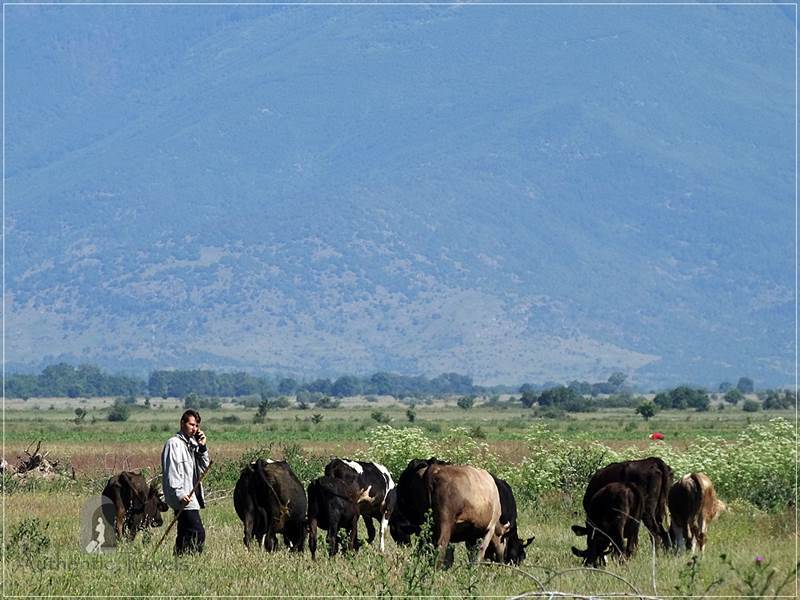
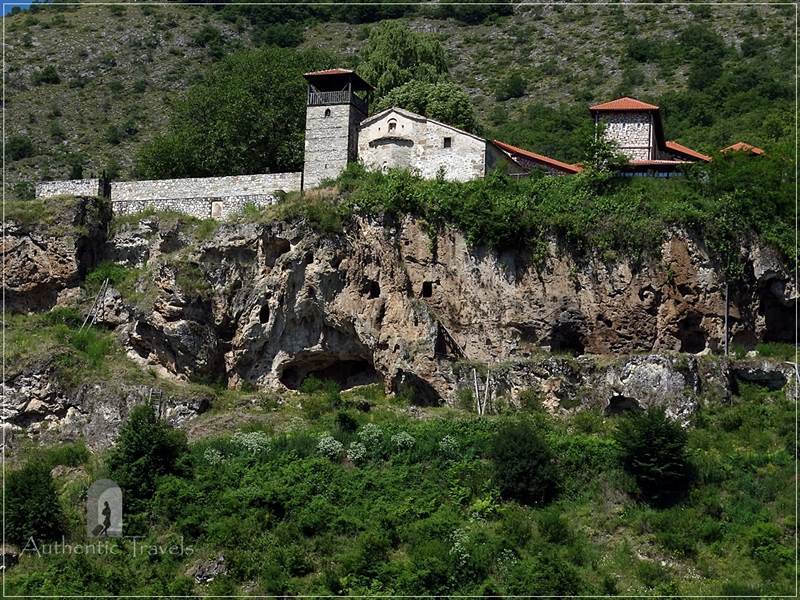
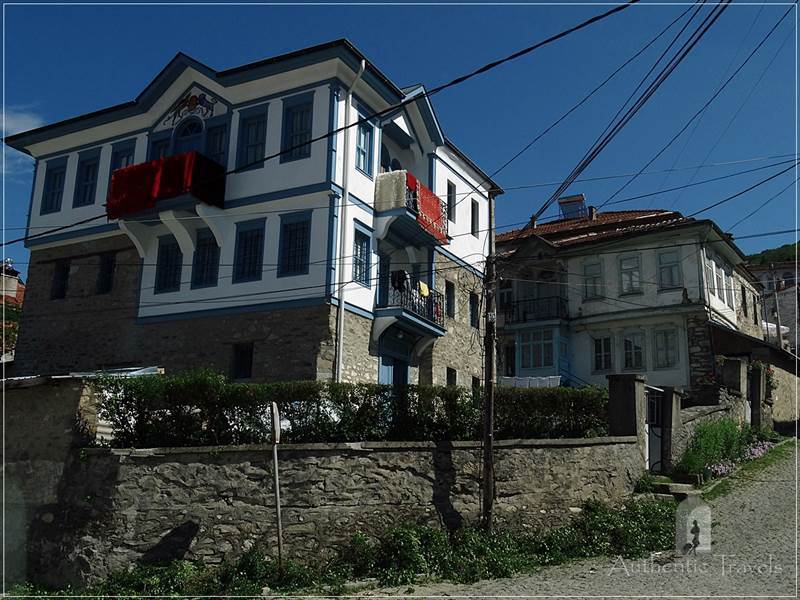
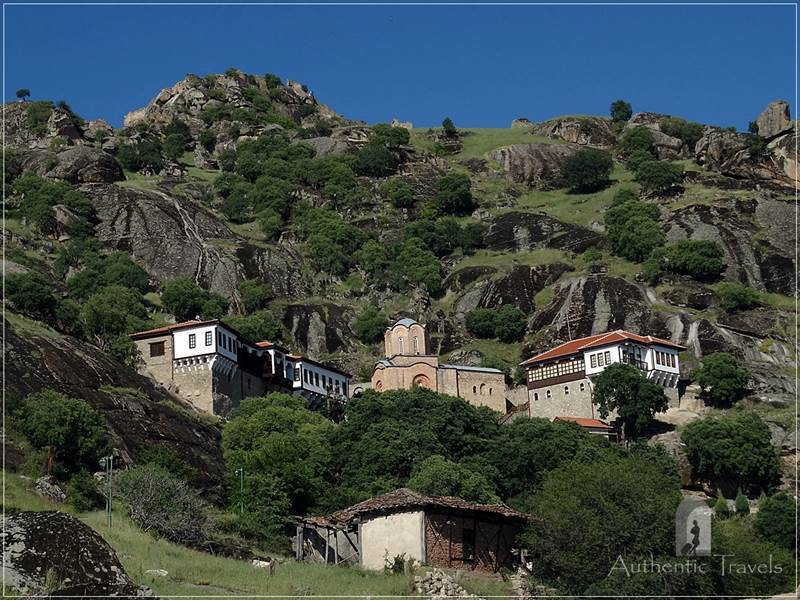
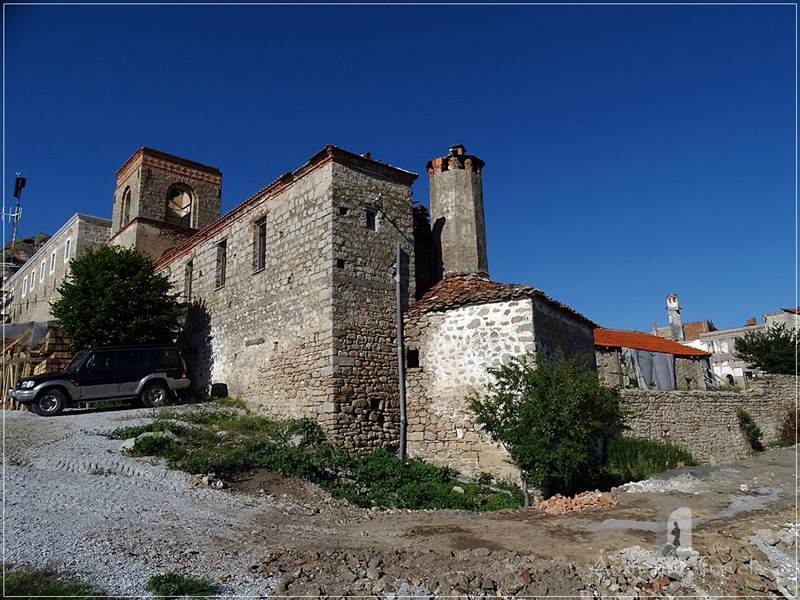
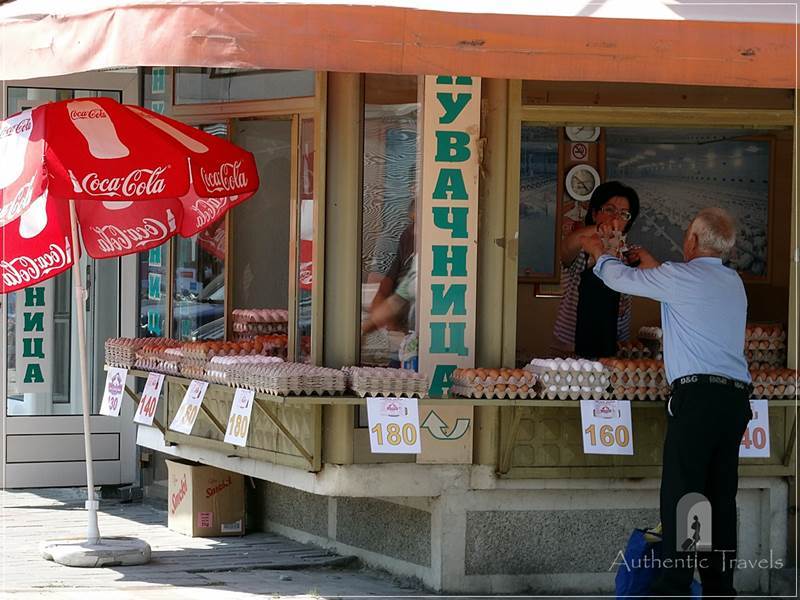
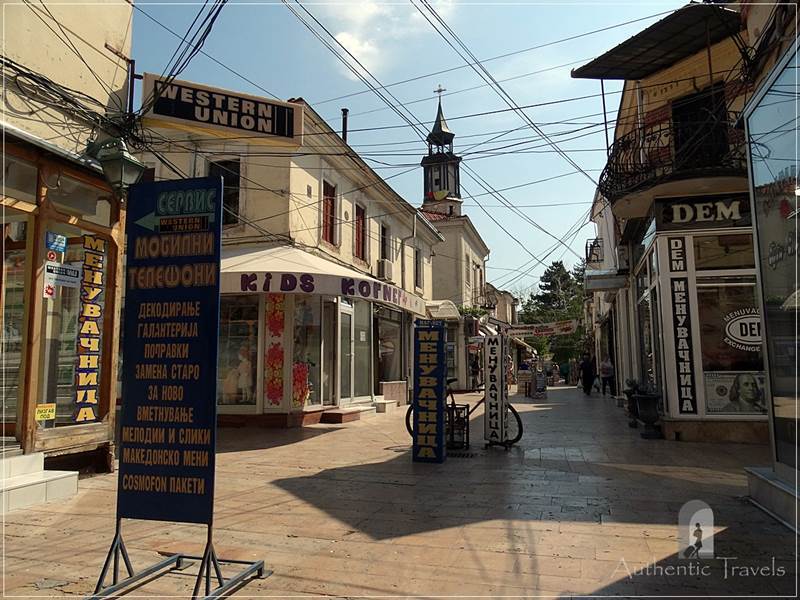
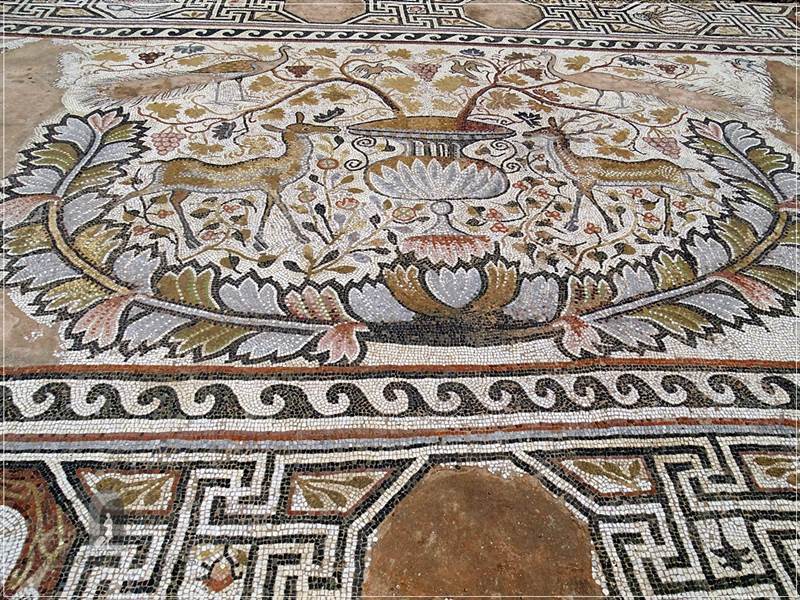
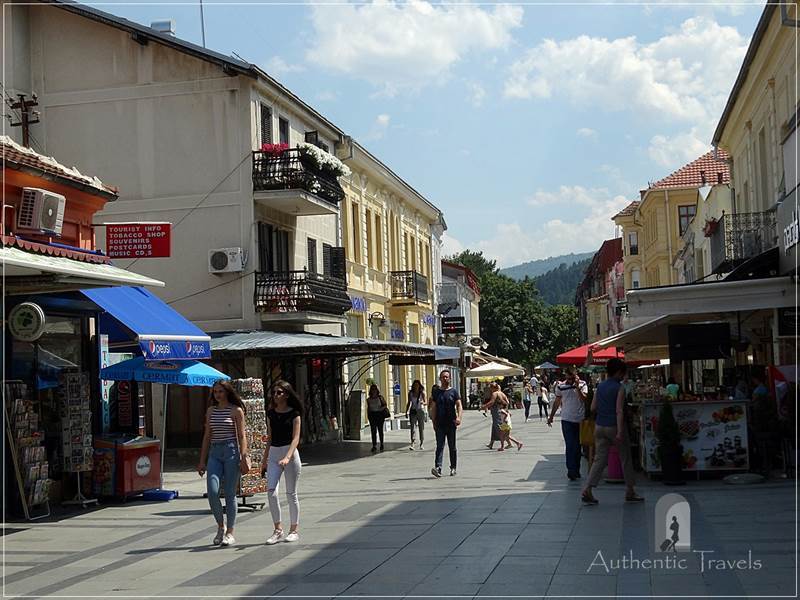
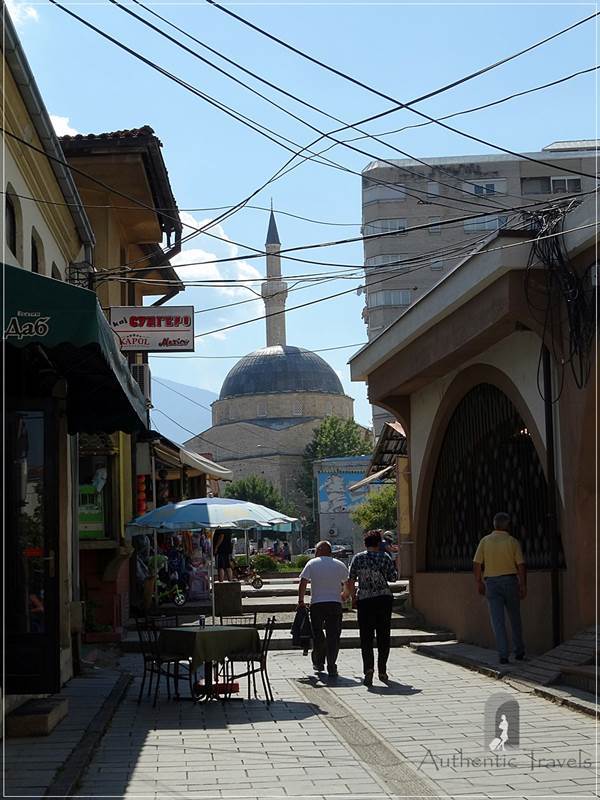
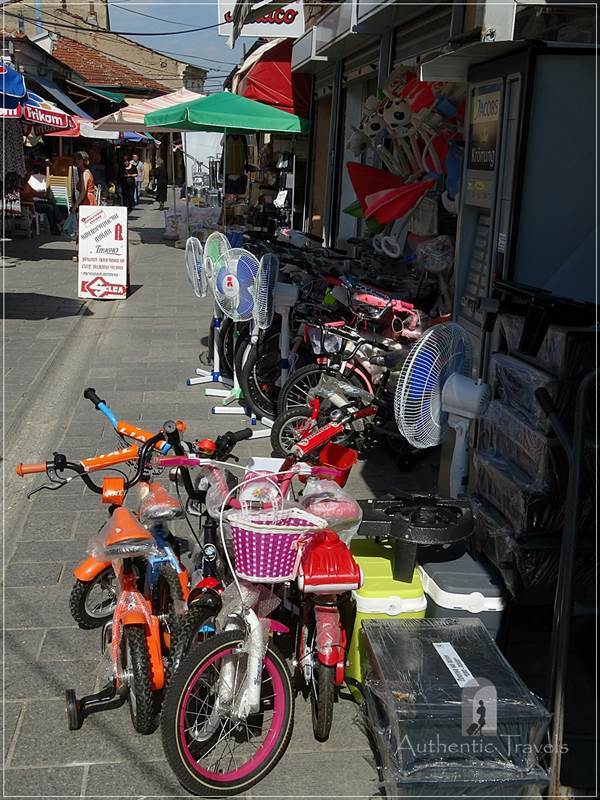
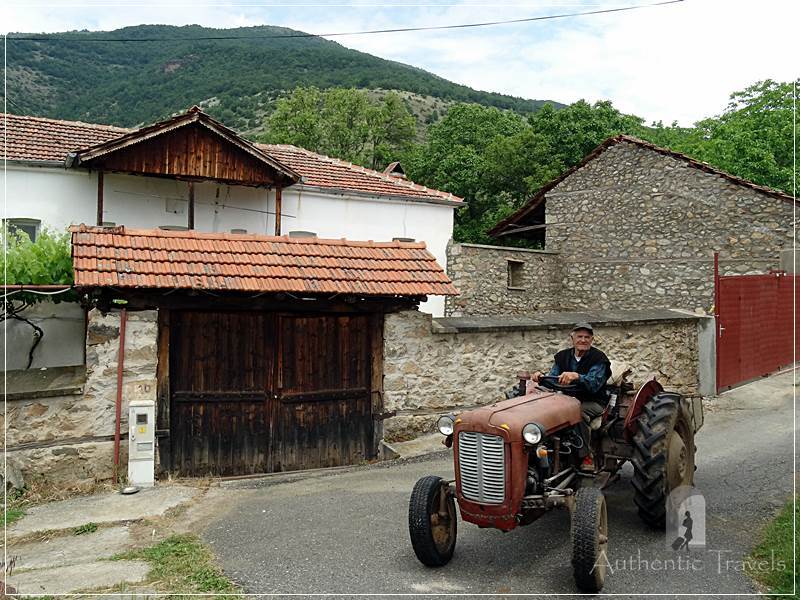
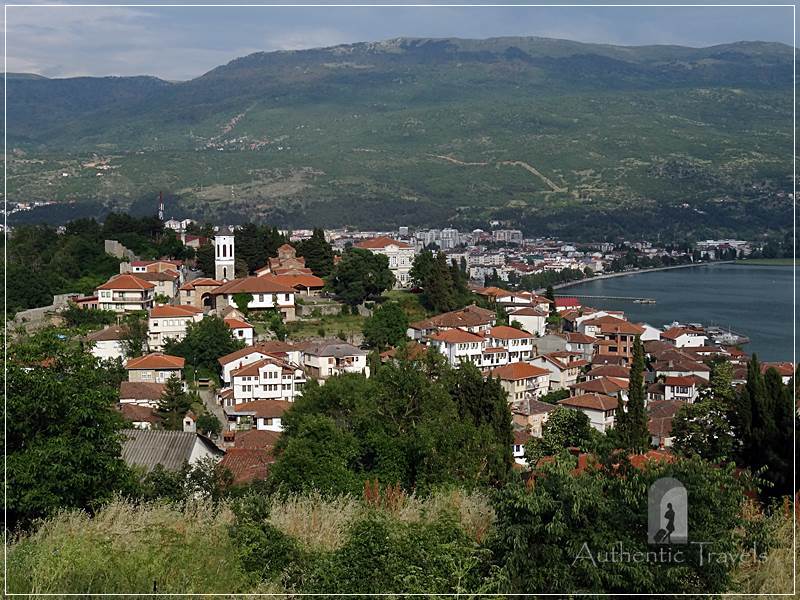
Wow, what a cool road trip you had and I think I need to do some shopping at that vegetable market – so cheap!
I ate from that kilo of tomatoes and peppers for one week – with one euro ! They had such a healthy food, no additives, everything bio.
What stunning destinations in Macedonia! I’ve never been myself, but I would certainly love to visit. I love, love, love monasteries, so I’m glad to see some made the top of your list for the area! I love Zrze perched on its cliff, and I would love to go to the site of the Old Turkish Bazar. What a cool destination!
I liked Zrze, too – especially that I was welcomed by a herd of cats.
I literally had not heard of this town until coming upon this blog post. I am loving this not only because of all the details, but because you’ve opened my mind to a totally new place on the global map. Thank you for that!
I have mentioned several town names in this post, so I hope you’ll be able to visit them all.
Your driving adventures up and down the mountains amaze me because I’m too scared to do it. I was imagining when the dark was barking at you and how terrified I would be to get out of my car. But I too would feel a sense of safety after seeing a parked jeep 🙂 I have never been to Macedonia, but I would love to put it on my list of places to visit.
Macedonia reminds me a bit of Bosnia, minus the presence of Roman mosaics and monastaries as Bosnia is one of Europe’s only Muslim states. But funny enough, the way you described their bazaar’s goods is almost identical to the bazaars I encountered in Sarajevo! Socks, t-shirts, and underwears instead of tsotskes! It was an actual everyday stop for locals looking to purchase everyday goods!
Macedonia is half Muslim (the western part) and half Christian (the eastern part) – an interesting mixture. Even though you can see in the western part of the country monasteries just across a valley with mosques and high minarets.
What a lovely journey. The monasteries look so seamlessly blended with the surroundings. The towns exude a strange sense of serenity that seems to border on the spiritual. I am also fascinated by the streets of Prilep and Bitola. What charming towns, would love to be able to take a leisurely stroll in the streets.
I enjoyed the relaxing atmosphere of the bazaars in Bitola and Prilep. And yes, it’s very nice to take a stroll in the streets.
Well it seems like with every post its getting even more invigorating. Macedonia is surely getting into my bucket list of road trips. Love how the old and new era congregates in 21st century. The villas in the area look so inviting. Although a campervan would also suffice (I suppose).
A great post for sure, but would also enjoy and refer a comprehensive 10-15 days itinerary. Would be a great help.
Lonely Planet has good suggestions for 10-15 days itineraries for visiting Macedonia. However, I wouldn’t suggest any plan trip since I encourage each traveler to find his/her own pace of traveling, not blindly follow a suggested itinerary that might not meet his/her needs. If you go through my posts about Macedonia, you can figure out what you like most and plan your own trip according to your desires.
Wow, I never thought that Southern Macedonia has these kind of stunning panoramic view. I find it very awesome and somehow the houses that are sturdily built near the rock mountain are amazing. I haven’t seen this kind of place in real life. The stone houses also have captured my attention cause I find it really interesting. How you have made this blog post is giving me a drive to visit here If I get the chance. Thank you so much for sharing this with us.
I liked a lot the Macedonian stone houses. I hope I could give you a glimpse of the Macedonian scenery.